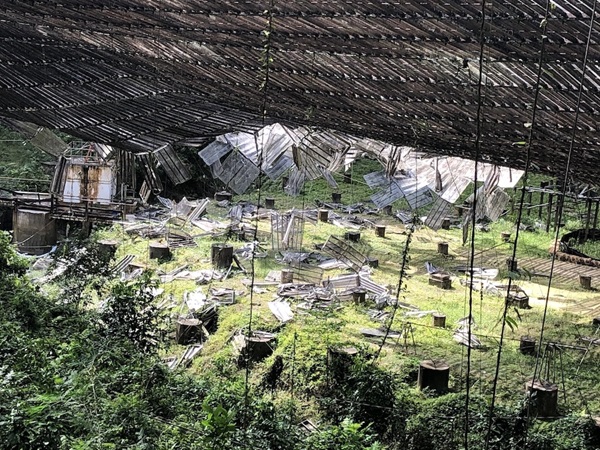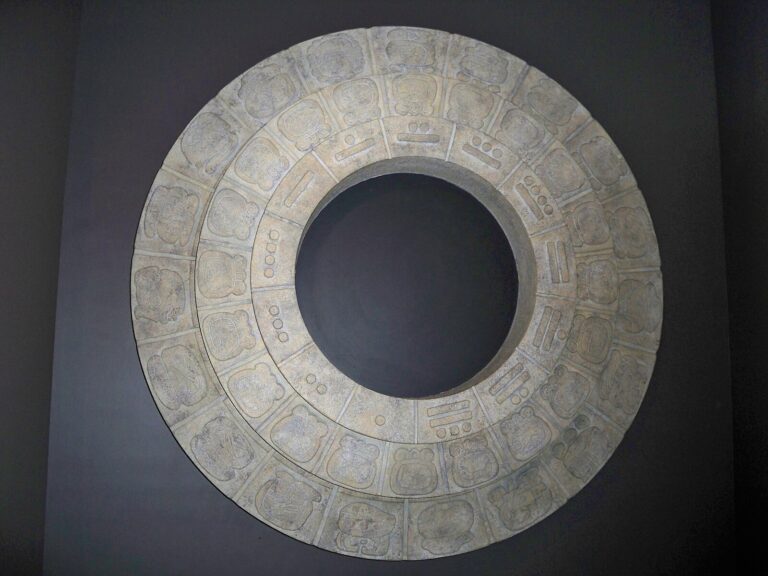Key Takeaways:
When an old stadium is torn down, local and sports museums preserve famous features and fans buy keepsakes. Some purchase the seats from which they watched their favorite games, while others seek alternative fittings that likewise evoke fond memories. These are far more intense than mere mementos, though. They’re more like shrines to heroes.
Puerto Rico’s Arecibo Observatory was a historic, world-famous telescope with a global fanbase in science, science fiction, movies, technology, and more. And after a series of cable failures led to the collapse of its receiving platform on December 1, 2020, what’s left of its 1,000-foot (305 meters) dish now holds roughly 900 tons of wreckage.
Those twisted remains are a painful reminder of the fate of an observatory that meant much to many. But they’re also important cultural artifacts of scientific history, ones that would be valued on the global memorabilia market.
Such a scenario is not unheard of. Early in the 2000s, the historic six-foot Leviathan telescope in Ireland, originally built by Lord Rosse required a new tube because the 160-year-old wood had rotted too much. Rather than trash those pieces, rectangular slices of the scope’s tube just a few inches across were mounted in frames and given to attendees of the Antique Telescope Society when they met at Birr Castle in 2002.
I did something similar in the 1970s when Sky & Telescope magazine, where I was assistant editor, updated from engraved copper printing plates to lithography. I advertised the beautiful old copperplates under the headline “Own a Piece of Sky & Telescope.” A lot of customers bought them as-is. And some also paid a premium to get them polished and mounted on plaques.
I didn’t go far enough, either: Celebrity keepsakes — including portraits, historic pictures, and autographs — are now sold in hero-worship frames for wonderfully high prices. Eager buyers include bars, restaurants, and fans looking to decorate their nooks or offices.
Scattering Arecibo’s remains
Pieces that deserve museum preservation should get it. The National Science Foundation (NSF), the facility’s owner, should give first dibs to places where Arecibo’s ethos is most important to show. The second round of picks go to all other institutions with a moral or financial stake in the observatory. Both are valuable.
After NSF distributes all it wants to, that will still leave a whole lot of sheeting, cables, spars, and other equipment. So, simply transfer the remaining wreckage to a “Friends of Arecibo” branch, if necessary.
Consult space-object collectors, memorabilia auction houses, merchants of celebrity frames, fan conventions, and so on. They know what buyers want, and what they don’t.
Every piece should come with a certificate of authenticity, plus photos of its original position in the working scope. Bent and broken pieces dramatically highlight the powerful forces of nature.
Then sell various sizes and forms at prices proportional to auction results. Offer small, unmounted fragments at thrifty prices for big fans with small budgets. Advertise first to scientists and engineers, then to the public. When sales slow, downsize the promotion to stay profitable.
Done respectfully, this procedure will produce a long-running public-awareness campaign, making a lot of people happy and widening and intensifying Arecibo’s fan base. It will also give enthusiasts a way to participate in Arecibo’s ongoing legacy in education and inspiring students into the sciences. The process will more than pay for itself.
And who knows — perhaps it will kick a bit into the large pot that needs filling to fund Arecibo’s replacement, too.













